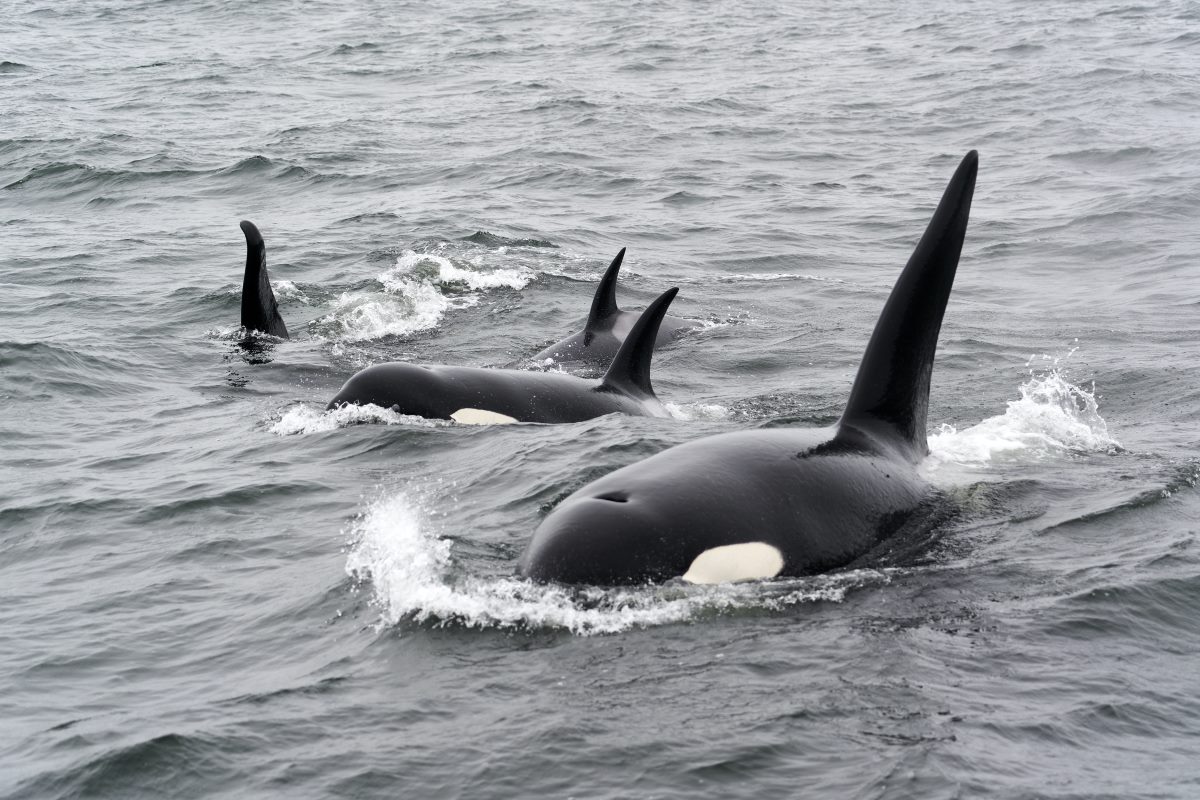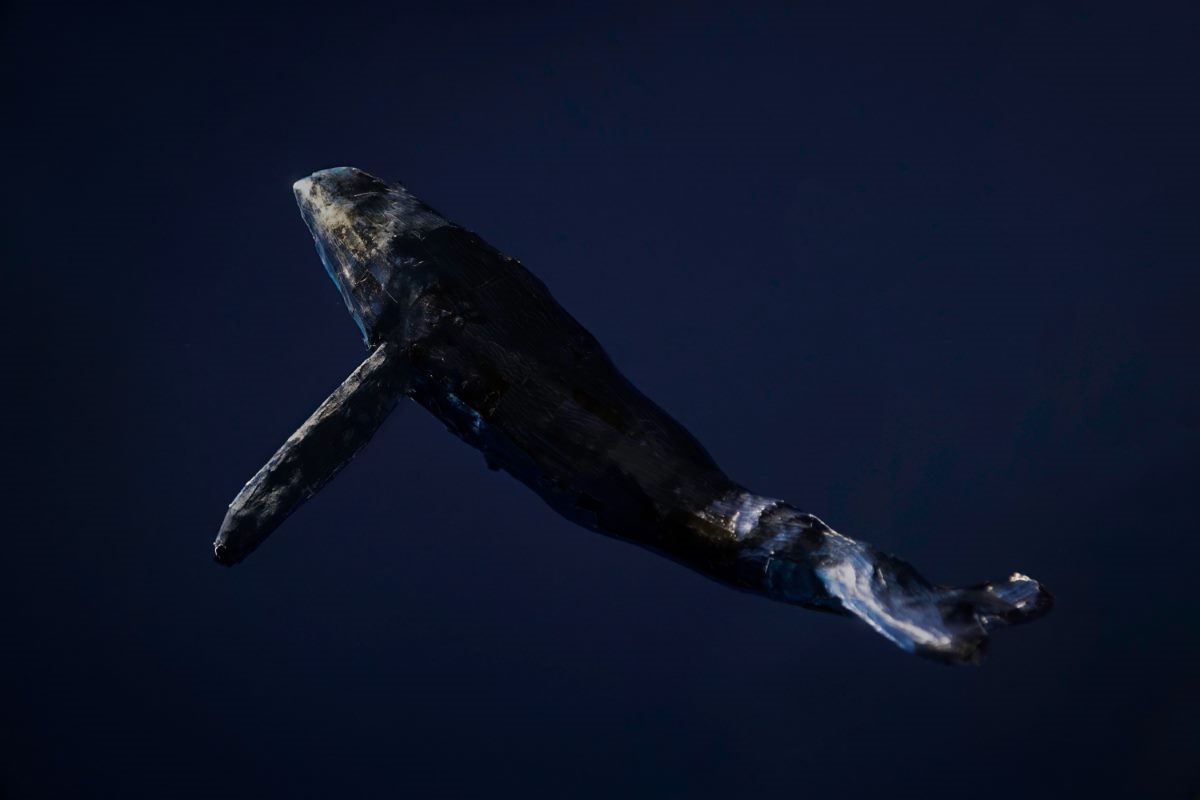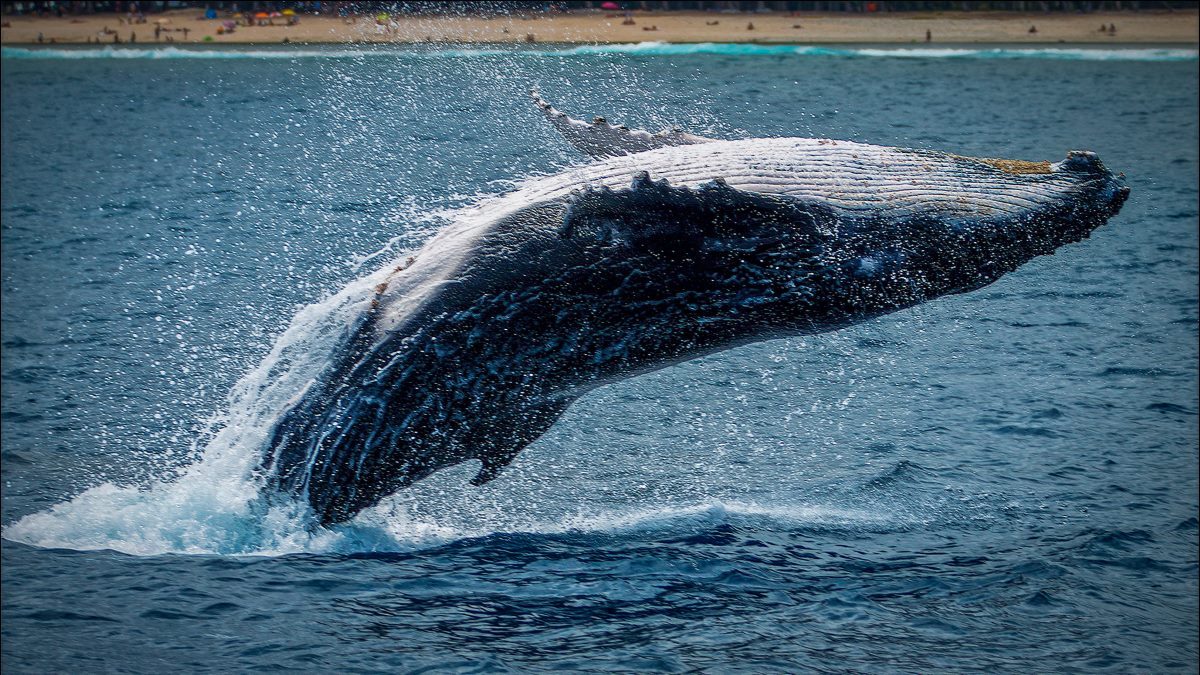Are you ready for an unforgettable experience of spotting massive humpback whales as they migrate along the coast? Byron Bay, situated on the easternmost point of Australia’s mainland, offers some of the best whale watching opportunities in the world. Every year, thousands of people flock to this charming coastal town to catch a glimpse of these gentle giants. In this post, we’ll take you on a journey to discover the best whale watching spots in Byron Bay and share some tips for making the most of your trip. So, pack your bags, grab your binoculars, and let’s get started!
The 2 Best Whale Watching in Byron Bay
The 2 Best Whale Watching in Byron Bay
1. Premier Whale Watching Byron Bay

Maximize your chances of seeing humpback whales by joining this whale watching tour in Byron Bay led by a marine biologist. You’ll head to areas where the whales are known to pass through during their migration in winter. Watch them as they majestically breach and listen to them sing by using an underwater hydrophone. Your knowledgeable guide will provide insights into whale behavior. The tour includes a spray jacket and snacks and water. You can also enjoy hassle-free pickup and drop-off from your hotel (if you choose the relevant option). The tour includes live commentary on board and life jackets. The vessel departs from the Lance Ferris Wharf in Ballina, a 30-minute scenic drive south of Byron Bay. Meet directly in front of the Wharf Bar & Restaurant on the Lance Ferris Wharf.
2. 3 Hour Kayak With the Dolphins Tour

Discover the beauty of Australia’s East Coast with a 3 Hour Kayak With the Dolphins Tour in Byron Bay. Take in the breathtaking sights on a guided tour in a two-person sit-on-top-style sea kayak. Paddle through the surf and get up close and personal with friendly bottlenose dolphins. Learn about local history and indigenous history, and see the most Easterly Point of the Australian mainland.
All safety gear and equipment, including life jackets, wetsuits, and helmets, are provided. You’ll also have access to Cape Byron Headland National Park and get the chance to catch some of Australia’s most famous waves in Byron Bay. As a bonus, enjoy all the Tim-Tams you can eat.
Please note that this tour is not suitable for children under 5. The dolphin guarantee ensures that if you don’t see a dolphin or whale (during whale season May-Nov), you can come again for free. Don’t miss out on the opportunity to experience one of the best tours that Byron Bay has to offer.
The Most Frequently Asked Questions about Whale Watching in Byron Bay
Are you planning a trip to Byron Bay and interested in experiencing the beauty of whale watching? Whale watching in Byron Bay is an annual ritual for many who indulge in nature, and it is an experience that’s worth every penny. However, we know it can be confusing and intimidating to plan an activity like whale watching, especially when it comes to figuring out what to expect and how to prepare. In this blog post, we will answer some of the most frequently asked questions about whale watching in Byron Bay, to help you plan an unforgettable experience.
1. When is the best time to go whale watching in Byron Bay?
Whale watching season in Byron Bay is between June and November, as the humpback whales migrate along the coast of Australia. The peak of the migration season is usually in September and October, when the whales are heading back down from their northern pilgrimage, making it an excellent time to spot them. However, whales can be seen on their way north as early as June, and their journey south may continue as late as November. Consequently, anytime between June and November is considered a good time to go whale watching. It’s worth noting that whales are not guaranteed to be seen on every tour, but the chances of spotting them are higher during peak season.
2. What types of whales can I expect to see?
The most common whale species found along the Byron Bay coast is the humpback whale. These majestic creatures can grow up to sixteen meters long and weigh up to forty tons. The humpbacks migrate every year from their summer feeding grounds in Antarctica to the warmer northern waters of Australia, passing by the Byron Bay coastline in the process.However, on occasion, Bryde’s whales and Southern right whales have also been seen in the region. Bryde’s whales are smaller than humpback whales and tend to travel on their own or in small pods of two or three. Southern right whales are a rarer sighting, but they have been spots near the Byron Bay coast in the past.
3. Where do the whale watching tours depart from in Byron Bay?
Most whale watching tours depart from the Byron Bay harbour, which is located on Bay Street. This location is convenient for travelers as it’s easy to find and only a short walk from the town center. The vessels used for whale watching are generally low-lying, spacious boats, which are designed to provide excellent vantage points for observing the whales.
4. What kind of clothing should I wear when going whale watching in Byron Bay?
It’s always a good idea to wear layers to a whale watching trip as the weather can change quickly, and it can get chilly out on the sea. Make sure to wear comfortable clothing and shoes, preferably non-slip shoes, as the surface of the boat can be slippery. Don’t forget to bring a hat, sunglasses, and sunscreen for sun protection.
5. Can I bring my camera on the boat?
Yes, most whale watching tours allow you to bring your camera and encourage you to take photos of the whales and dolphins you see. However, it’s important to ensure that the camera has a wrist strap, as the boats can be rocky out on the water, which can cause loss of balance and slippery conditions. If you don’t have a good camera, some tours may offer a photographer who would take pictures and sell them to you at a later stage.
6. Is motion sickness common on whale watching tours in Byron Bay?
Motion sickness can occur on whale watching tours, but not everyone is susceptible to it. Motion sickness, however, doesn’t have to ruin your day. If you’re someone who tends to get seasick, we recommend taking seasickness tablets or patches before your trip. Additionally, avoid alcohol and heavy meals before your trip, and make sure to stay hydrated.
7. Are children allowed on whale watching tours?
Most whale watching tours in Byron Bay welcome children on board. However, it’s important to note that minimum age requirements may vary between tours. Some tours may require children to be at least five years old, while others may allow children as young as two years old. It’s important to check with the tour operator beforehand to ensure that they cater to specific age groups.
How to Do Whale Watching in Byron Bay
Byron Bay is a famous coastal town situated in the Northern Rivers region of New South Wales, Australia. It is renowned for its stunning natural beauty, crystal clear waters, and is one of the best places in the world to experience whale watching. Every year, thousands of tourists head to Byron Bay to view these majestic creatures in their natural habitat. If you’re planning a trip to Byron Bay and are interested in whale watching, then this guide is for you. Below are some essential tips on how to do whale watching in Byron Bay.
1. Choose the Best Time for Whale Watching
The best time to do whale watching in Byron Bay is during the months of May to November. This period is when humpback whales migrate through this region. You’re most likely to see them during their northern migration between the months of May and August and their southern migration between September to November.
2. Book a Recognized Whale Watching Tour Operator
A great way to experience whale watching in Byron Bay is to go on a tour with a reputable whale watching tour operator. There are several recognized operators in the region, and it’s best to purchase tickets from one of them to ensure that you have a safe and enjoyable experience. Byron Bay Whale Watching, Whale Watching Byron Bay, and Blue Bay Whale Watching are all reputable operators that offer top-notch services.
3. Dress Appropriately for the Tour
When planning to go on a whale-watching tour, it’s important to dress appropriately for the occasion. You should consider wearing a warm jacket and comfortable shoes. Even if it’s a warmer day in Byron Bay, it can get chilly out on the open water, so dressing in layers is a good idea.
4. Listen to Instructions and Safety Briefings
Before heading out to sea, the whale watching tour operators will provide safety briefings and essential instructions. You must ensure that you pay attention to these instructions to ensure your safety and the safety of others on the tour. Never lean over the edge of the boat or stand up while the boat is moving.
5. Bring the Right Equipment
For an optimal whale watching experience, it’s essential to bring some essential equipment. These include binoculars, cameras, sunscreen, hats, and sunglasses. Some operators also provide binoculars and cameras, so it’s best to check with them before the tour.
6. Be Prepared to Wait and Have Patience
Whale watching is a fun and exciting activity, but it requires patience. Whales are wild animals, and it’s not guaranteed that you’ll see them on your first day out at sea. Be prepared to wait and have a little patience, and you’re more likely to have an enjoyable experience.
7. Follow Whale Watching Rules and Regulations
In Australia, there are strict rules and regulations when it comes to whale watching. These regulations have been put in place to protect the whales and ensure their safety. Ensure you follow the rules and regulations set out by the whale watching tour operators when out at sea.
8. Don’t Harass the Whales
Whales are majestic creatures, and it’s important to respect their space and not harass them. Keep a safe distance from the whales, and don’t swim or touch them. Harassing whales is illegal in most countries, including Australia.
Book Your Tour Now
Whale watching in Byron Bay is an unforgettable experience that shouldn’t be missed. By following the tips discussed in this article, you’ll have a safe and enjoyable experience in this beautiful coastal town. Remember to book with a reputable tour operator, dress appropriately, bring the right equipment, have patience, follow rules and regulations, and be respectful to the whales. We hope this guide has provided the necessary information to plan your whale watching experience in Byron Bay.
Table of Contents

